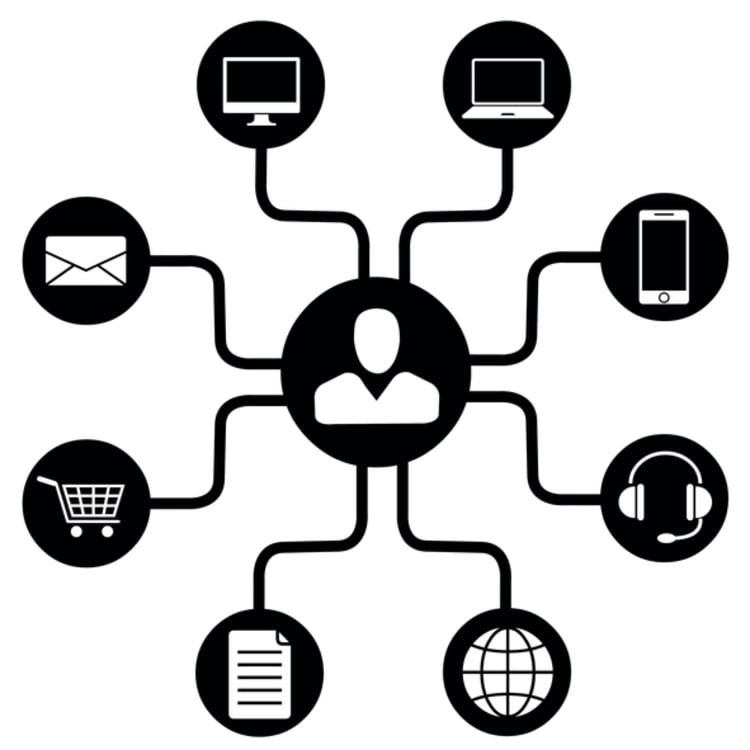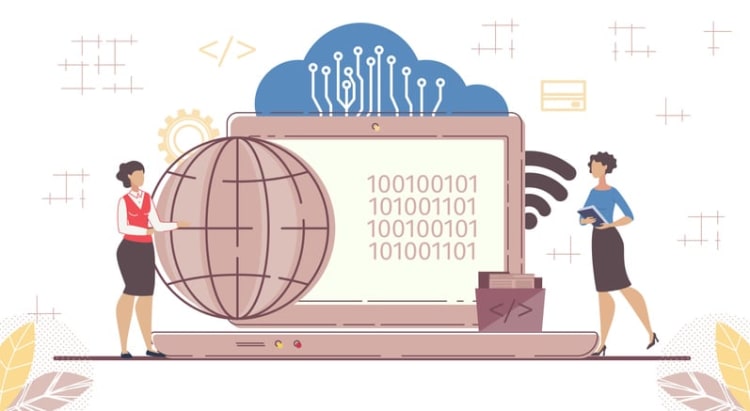In an era where customer experience reigns supreme, businesses must adapt to the ever-evolving landscape of communication channels. Traditional call centers are quickly becoming obsolete, as customers demand more convenient and personalized interactions. Enter the omnichannel contact center: a cutting-edge approach that unifies all communication channels into a single platform, providing a seamless customer journey and unlocking new heights in customer satisfaction and agent efficiency.
But what exactly is an omnichannel contact center, and how can businesses successfully implement it to reap its many benefits? In this blog post, we will dive into the world of omnichannel contact centers, exploring their key components, advantages, challenges, and solutions. We will also guide you in choosing the right solution for your business and provide a real-world case study of a successful implementation. So, let’s embark on this journey towards exceptional customer service and uncover the power of omnichannel contact centers.
Key takeaways
- Unlock the power of omnichannel contact centers for improved customer satisfaction, agent efficiency and business insights.
- Integrate legacy systems with modern solutions to ensure a seamless experience across channels.
- Invest in comprehensive training programs and robust security measures when implementing an omnichannel strategy.
The omnichannel contact center revolution

The customer service landscape has undergone a significant transformation in recent years, greatly impacting the customer service experience. Traditional call centers, which primarily handled phone calls, have evolved into contact centers that support multiple channels, including email, chat, and social media. This shift has been driven by changing customer preferences and the rapid development of digital communication channels. Now, more than ever, customers expect a consistent and seamless experience across all touchpoints with a business.
Omnichannel contact centers have emerged as the answer to this growing demand, providing an integrated approach to customer service that unifies all communication channels into a single platform. By connecting all channels and providing agents with unified customer data, omnichannel contact centers enable businesses to deliver exceptional customer service, streamline agent workflows, and gain valuable business insights. With the added benefits of an omnichannel cloud contact center, companies can further enhance their customer experience and operational efficiency using omnichannel contact center software.
We shall further explore the metamorphosis from traditional call centers to contact centers and the subsequent emergence of omnichannel contact centers.
Evolution from call centers to contact centers
The transition from call centers to contact centers was fueled by the need to cater to customers’ ever-changing communication preferences. With the emergence of digital channels such as email, chat, and social media platforms, customers began to rely on multiple channels to interact with businesses. Single-channel phone support, as provided by traditional call centers, was no longer sufficient to meet these evolving expectations.
As a result, businesses started adopting multichannel contact centers, which allowed them to manage various communication channels independently. However, this approach still lacked the seamless integration and unified customer data that customers desired. This prompted the rise of omnichannel contact centers, which not only support multiple channels but also connect and unify them for smooth transitions, ensuring a consistent and personalized customer experience across all channels.
The rise of omnichannel contact centers
The rise of omnichannel contact centers can be attributed to the growing need for seamless integration and unified customer data across all communication channels. An omnichannel contact center goes beyond simply supporting multiple channels; it unifies them into a single platform, enabling agents and supervisors to manage communications across all channels, including voice, video, and digital channels such as social media. This approach allows businesses to provide a consistent, personalized, and seamless customer experience, regardless of the channel used.
The key components of an omnichannel contact center include unified customer data, seamless channel integration, and intelligent routing and workforce management. These elements work hand in hand to deliver increased customer satisfaction, improved agent efficiency, and enhanced business insights.
Next, we’ll examine these components more closely, highlighting their roles in a successful omnichannel contact center strategy.
Key components of an omnichannel contact center

An effective omnichannel contact center strategy hinges on three key components: unified customer data, seamless channel integration, and intelligent routing and workforce management. These components form the foundation of a successful omnichannel approach, enabling businesses to deliver a consistent and personalized customer experience, streamline agent workflows, and gain valuable insights into customer behavior and preferences.
We will further dissect each of these components, shedding light on their significance and their contributions to an effective omnichannel contact center strategy. By understanding and implementing these key components, businesses can unlock the full potential of an omnichannel contact center and drive customer satisfaction, agent efficiency, and business growth.
Unified customer data
Unified customer data is the backbone of an omnichannel contact center. By consolidating customer information from various channels into a single, comprehensive view, businesses can provide a seamless and consistent experience for their customers. This not only enhances customer satisfaction but also enables agents to access relevant customer data in real-time, improving agent productivity and reducing the need for repetitive questions.
A critical aspect of unified customer data is the integration of CRM systems with contact center software. This enables agents to:
- Access customer records
- Access contact details
- Access prior orders
- Access notes from previous conversations with other agents
All within a single interface. As a result, agents are better equipped to provide personalized and efficient customer service, leading to improved customer satisfaction and loyalty.
Seamless channel integration
Seamless channel integration is essential in an omnichannel contact center to meet the ever-changing expectations of today’s customers. As customers increasingly utilize various communication channels to interact with businesses, it is crucial for contact centers to accommodate these preferences and ensure a smooth transition between channels, both for customers and agents.
To achieve seamless channel integration, businesses must adopt an omnichannel strategy that focuses on understanding the customer journey and preferences. This approach enables businesses to provide a consistent and personalized experience across all channels, regardless of whether a customer is communicating via:
- phone
- chat
- social media
By ensuring smooth transitions between channels and providing agents with the tools to manage multiple channels effectively, businesses can elevate customer satisfaction and foster long-term loyalty.
Intelligent routing and workforce management
Intelligent routing and workforce management are crucial components of an effective omnichannel contact center strategy. These elements enable businesses to optimize agent productivity and ensure that customer inquiries are directed to the most appropriate agent or resource based on various factors, such as skills, availability, and customer preferences.
Intelligent routing ensures that customers receive prompt and personalized assistance from the best-suited agent, leading to an enhanced customer experience. Workforce management, on the other hand, focuses on optimizing agent scheduling and workload allocation, ensuring that agents have the necessary resources and support to deliver exceptional customer service.
By implementing intelligent routing and workforce management, businesses can streamline agent workflows, improve customer satisfaction, and ultimately drive business growth.
Advantages of implementing an omnichannel contact center

Implementing an omnichannel contact center strategy offers numerous advantages for businesses, ranging from enhanced customer satisfaction to improved agent efficiency and better business insights. By unifying communication channels, consolidating customer data, and implementing intelligent routing and workforce management, businesses can deliver a consistent, personalized, and seamless customer experience that fosters long-term loyalty.
We will further outline the specific perks of adopting an omnichannel contact center, such as heightened customer satisfaction, increased agent productivity, and more insightful business data. By understanding and leveraging these benefits, businesses can unlock the full potential of an omnichannel contact center strategy and drive customer satisfaction, agent productivity, and overall business growth.
Enhanced customer satisfaction
The primary advantage of implementing an omnichannel contact center is the potential to cultivate more loyal customers by providing a consistently superior customer experience. By unifying communication channels and providing agents with a comprehensive view of customer data, businesses can deliver:
- Personalized and efficient customer service
- Consistent and seamless interactions across channels
- Quick and accurate resolution of customer issues
- Proactive and personalized outreach to customers
- Enhanced customer satisfaction and loyalty
This approach meets and exceeds customer expectations, leading to increased customer retention, customer engagement, and business growth.
Furthermore, an omnichannel approach enables businesses to:
- Better understand customer preferences and behavior
- Tailor their services and offerings accordingly
- Increase customer satisfaction rates
- Increase customer retention
- Gain more loyal customers who are more likely to recommend the business to others.
Improved agent efficiency
An omnichannel approach can also significantly boost agent efficiency by:
- Streamlining workflows
- Providing agents with the necessary tools and information to handle customer inquiries effectively
- Giving agents access to unified customer data
- Offering seamless channel integration
With these capabilities, customer service agents, also known as contact center agents, can quickly respond to customer inquiries, reducing average handling time and improving first contact resolution rates.
Furthermore, intelligent routing and workforce management ensure that agents are allocated tasks based on their skills and availability, optimizing agent productivity and enabling them to focus on delivering exceptional customer service. By improving agent efficiency, businesses can not only enhance customer satisfaction but also reduce operating costs and drive overall business growth.
Better business insights
Another advantage of implementing an omnichannel contact center is the ability to gain valuable business insights from the wealth of data generated by customer interactions. By analyzing and understanding customer behavior, preferences, and feedback, businesses can make data-driven decisions to optimize their customer service processes and offerings, ultimately driving customer satisfaction and loyalty.
Moreover, businesses can leverage real-time analytics and reporting tools to:
- Monitor and assess the performance of their contact center
- Identify trends and areas for improvement
- Track the impact of their omnichannel strategy on customer satisfaction and business growth
With better business insights, organizations can make informed decisions to drive continuous improvement and stay ahead of the competition.
Challenges and solutions in omnichannel contact center implementation

While the advantages of implementing an omnichannel contact center are evident, businesses may face various challenges in the process, such as integrating legacy systems, training and empowering agents, and ensuring data security and privacy. Recognizing and addressing these challenges is crucial to ensure a successful implementation and unlock the full potential of an omnichannel contact center strategy.
We will further elaborate on these challenges and provide potential solutions to aid businesses in surmounting these obstacles, enabling a successful implementation of their omnichannel contact center strategies.
Integrating legacy systems
One of the main challenges businesses face when implementing an omnichannel contact center strategy is integrating legacy systems with modern contact center solutions. This can be a complex and resource-intensive process, requiring a deep understanding of existing systems and the ability to integrate new technologies seamlessly.
To overcome this challenge, businesses can start by:
- Assessing their existing systems
- Identifying the desired outcomes from the integration process
- Mapping out the integration process
- Testing the integration
- Monitoring its progress
By following these steps, businesses can ensure a successful legacy system integration and unlock the full potential of their omnichannel contact center solution.
Training and empowering agents
Another critical challenge in implementing an omnichannel contact center is training and empowering agents to effectively utilize the new solutions. Agents must be proficient in handling customer inquiries across multiple channels and leveraging the unified customer data available to them.
To address this challenge, businesses can invest in comprehensive training programs that cover both the technical aspects of the new contact center software and the skills required to deliver outstanding customer service across all channels. By providing ongoing support and feedback, businesses can ensure that agents remain engaged and committed to delivering exceptional customer service in an omnichannel environment.
Ensuring data security and privacy
Ensuring data security and privacy is another significant challenge in implementing an omnichannel contact center strategy. With the increased amount of customer data being collected and stored across multiple channels, businesses must take robust measures to protect this data and comply with relevant regulations.
To safeguard customer information and maintain compliance, businesses should employ the following security measures:
- Strong encryption
- Access controls
- Firewalls
- Antivirus software
- Regular data backups
Additionally, businesses should continuously monitor and assess their data security measures to identify and address potential vulnerabilities, ensuring the ongoing protection of customer data and privacy.
Choosing the right omnichannel contact center solution

Selecting the right omnichannel contact center solution is crucial to achieving the desired outcomes from your implementation. With numerous solutions available in the market, businesses must carefully assess their unique needs and requirements, compare features and functionality, and evaluate pricing and support options to make an informed decision.
We will further guide you on assessing your business needs, comparing features and functionalities, and weighing pricing and support options when selecting the most suitable omnichannel contact center solution for your organization.
Assessing your business needs
Before selecting an omnichannel contact center solution, it is essential to understand your organization’s unique needs and requirements. This includes:
- Evaluating your current customer service demands
- Considering the communication channels your customers prefer
- Determining your budget for implementing a new solution
By taking the time to assess your business needs, you can ensure that the omnichannel contact center solution you choose aligns with your organization’s objectives and provides the functionality and features required to deliver a seamless and consistent customer experience across all channels.
Comparing features and functionality
Once you have a clear understanding of your business needs, it is crucial to compare the features and functionality of different omnichannel contact center solutions available in the market. Key factors to consider include:
- The channels supported
- Integration capabilities
- Customization options
- Analytics and reporting tools
By carefully evaluating the features and functionality of each solution, you can identify the one that best meets your organization’s needs and requirements, ensuring a successful implementation and enabling your business to reap the full benefits of an omnichannel contact center strategy.
Evaluating pricing and support options
Finally, it is important to consider the cost and support services offered by different omnichannel contact center solution providers. This includes evaluating flexible pricing models, such as pay-as-you-go, subscription-based, or usage-based pricing, as well as the level of support and training provided by the vendor.
By taking the time to evaluate pricing and support options, you can ensure that the omnichannel contact center solution you choose provides the best value for your investment and offers the necessary resources and expertise to help your business succeed in implementing an omnichannel strategy.
Kumospace: a new dimension in customer interaction
Infuse a novel layer to your omnichannel contact centers with Kumospace. This spatial technology platform provides an immersive virtual environment, enabling engaging customer interactions in a digital yet personable manner. Integrating Kumospace allows representatives to guide customers through interactive virtual spaces, enhancing customer service experiences with dynamic, visually rich engagements. Adopting such innovative solutions differentiates your brand, offering uniquely captivating customer interactions in the competitive digital space.
Case study: successful omnichannel contact center implementation

XYZ Company, a mid-sized e-commerce business, faced challenges in providing consistent and personalized customer service due to its reliance on a traditional call center and siloed customer data. Recognizing the need for change, the company decided to implement an omnichannel contact center solution to unify communication channels and consolidate customer information.
After carefully assessing its business needs, comparing features and functionality, and evaluating pricing and support options, XYZ Company chose an omnichannel contact center solution that met its requirements. The implementation was successful, resulting in improved customer satisfaction, increased agent efficiency, and valuable business insights that fueled the company’s growth.
This case study demonstrates the potential benefits of a successful omnichannel contact center implementation and the importance of choosing the right solution for your business.
Summary
In conclusion, implementing an omnichannel contact center strategy offers numerous benefits for businesses, including enhanced customer satisfaction, improved agent efficiency, and better business insights. By understanding and implementing the key components of an omnichannel contact center, such as unified customer data, seamless channel integration, and intelligent routing and workforce management, businesses can unlock the full potential of this approach and drive customer satisfaction, agent productivity, and overall business growth.
However, it is crucial to carefully assess your business needs, compare features and functionality, and evaluate pricing and support options when choosing the right omnichannel contact center solution for your organization. With the right solution in place, businesses can overcome the challenges associated with implementing an omnichannel strategy and ensure a successful transition to a more customer-centric approach.
FAQs
The difference between multichannel and omnichannel contact centers is that in multichannel, customer data and interactions are siloed, while in omnichannel, customer data is integrated and interactions are continuous.
The omnichannel contact center offers a range of benefits such as improved brand consistency, increased sales, superior customer service, improved customer loyalty and satisfaction, and cost savings. Overall, it provides great advantages that can help you stay ahead of the competition.
An omnichannel contact center is cloud-based software that enables customer service agents to provide support and share information across multiple channels such as phone calls, chats, emails, text messages and social media, allowing customers to seamlessly switch between them. This type of software is becoming increasingly popular as businesses strive to provide a better customer experience. It allows agents to quickly access customer data and provide personalized support, no matter which channel the customer is using. Additionally, it helps to streamline customer service operations, reducing costs and improving efficiency.
Integrating legacy systems, training and equipping agents, and ensuring data security and privacy are key challenges typically encountered when implementing an omnichannel contact center strategy.
Businesses should evaluate their specific needs, compare features and functionality, and review pricing and support options to choose the right omnichannel contact center solution.





